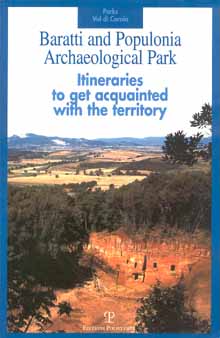
The promontory of Populonia and the gulf of Baratti are today one of the most characteristic landscapes of the Tuscan coast. Rolling hills, Mediterranean underbrush on steep slopes that drop sheer into the blue sea, history and archaeology, all come together to evoke pictorial images. Here, we encounter traces of ancient populations, starting from the beach of Baratti: an open-air museum shining with iron scoria that testifies to the impressiveness of the Etruscan industrial city of Populonia.
Fron here, climbing up the past the necropolises of San Cerbone and Le Grotte, we reach the acropolis of the Etruscan city and the medieval village of Populonia, led by archaeological artifacts narrating millennia of history.
Quite a different fate could have awaited these places if, in the sixties, an attempt was not thwarted to lot the gulf of Baratti and the entire promontory of Populonia, archaeological areas included.
The promontory of Populonia and the gulf of Baratti are today one of the most characteristic landscapes of the Tuscan coast. Rolling hills, Mediterranean underbrush on steep slopes that drop sheer into the blue sea, history and archaeology, all come together to evoke pictorial images. Here, we encounter traces of ancient populations, starting from the beach of Baratti: an open-air museum shining with iron scoria that testifies to the impressiveness of the Etruscan industrial city of Populonia.
Fron here, climbing up the past the necropolises of San Cerbone and Le Grotte, we reach the acropolis of the Etruscan city and the medieval village of Populonia, led by archaeological artifacts narrating millennia of history.
Quite a different fate could have awaited these places if, in the sixties, an attempt was not thwarted to lot the gulf of Baratti and the entire promontory of Populonia, archaeological areas included.
Polistampa, 2002
Pagine: 96
Caratteristiche: ill. col., br.
Formato: 13,5x21
ISBN: 88-8304-460-6
Settori: